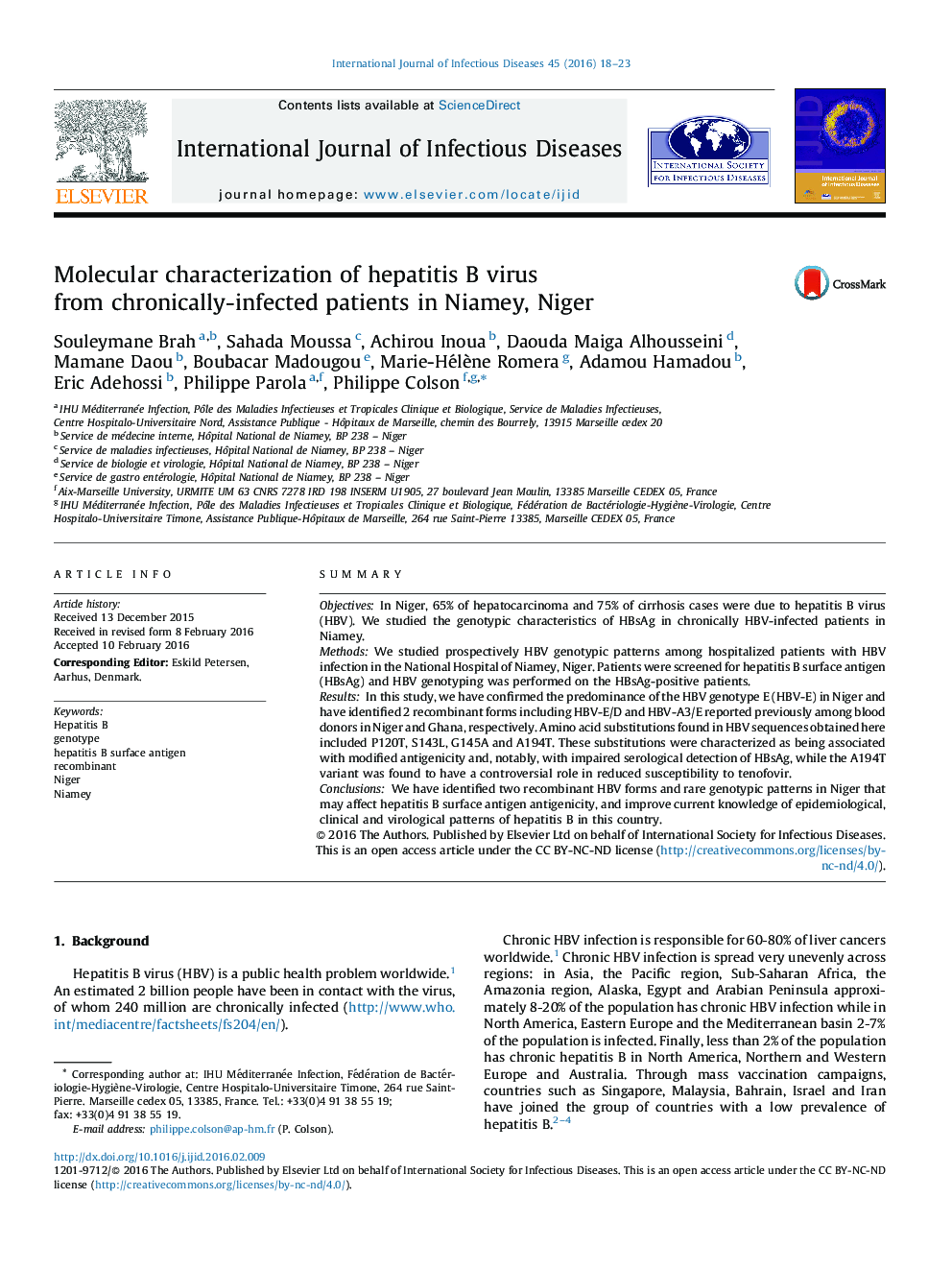| Article ID | Journal | Published Year | Pages | File Type |
|---|---|---|---|---|
| 3361748 | International Journal of Infectious Diseases | 2016 | 6 Pages |
•This study is the second one to assess HBV genotypic patterns in Niger.•HBV-D/E and HBV-A3/E recombinants were identified in chronically-infected patients.•They were previously reported in blood donors in Niger and Ghana, respectively.•Amino acid patterns previously associated with modified antigenicity were found.
SummaryObjectivesIn Niger, 65% of hepatocarcinoma and 75% of cirrhosis cases were due to hepatitis B virus (HBV). We studied the genotypic characteristics of HBsAg in chronically HBV-infected patients in Niamey.MethodsWe studied prospectively HBV genotypic patterns among hospitalized patients with HBV infection in the National Hospital of Niamey, Niger. Patients were screened for hepatitis B surface antigen (HBsAg) and HBV genotyping was performed on the HBsAg-positive patients.ResultsIn this study, we have confirmed the predominance of the HBV genotype E (HBV-E) in Niger and have identified 2 recombinant forms including HBV-E/D and HBV-A3/E reported previously among blood donors in Niger and Ghana, respectively. Amino acid substitutions found in HBV sequences obtained here included P120T, S143L, G145A and A194T. These substitutions were characterized as being associated with modified antigenicity and, notably, with impaired serological detection of HBsAg, while the A194T variant was found to have a controversial role in reduced susceptibility to tenofovir.ConclusionsWe have identified two recombinant HBV forms and rare genotypic patterns in Niger that may affect hepatitis B surface antigen antigenicity, and improve current knowledge of epidemiological, clinical and virological patterns of hepatitis B in this country.
